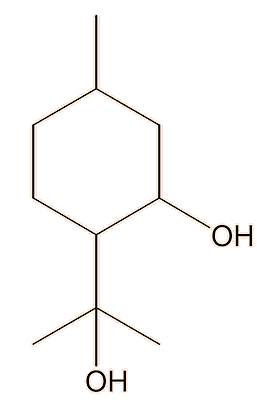
![]()
PMD
(p-menthane-3,8-diol)
A natural mosquito repellent.
![]()
Simon Cotton
University of Birmingham
![]()
Molecule of the Month December 2023
Also available: JSMol version.
![]()

 |
PMD(p-menthane-3,8-diol)A natural mosquito repellent.
Simon Cotton
Molecule of the Month December 2023
|
 |
Lots of people want a ‘natural’ insect repellent, and the repellent most used round the world, DEET (N,N-diethyl-meta-toluamide, MOTM January 2011), is synthetic.
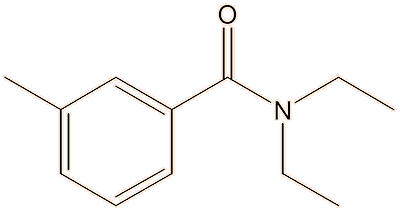 |
| DEET |
Well, DEET has its disadvantages.
DEET is pretty safe for humans to have on their skin, but is a good solvent for plastics, so not good for the keyboard on your laptop or other device... and maybe your clothes. So you might want an alternative, like Bayrepel. This seems to work as well as DEET – and does not dissolve plastics.
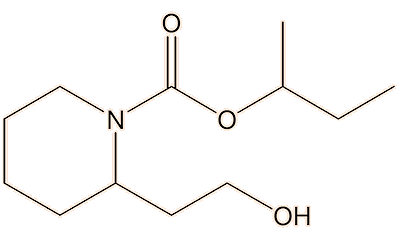 |
| Bayrepel (icaridin, picaridin) |
No, and it doesn’t have an endorsement from Pamela Anderson, either. It gets the name from being manufactured by Bayer. It’s also known as icaridin (WHO’s choice) or picaridin.
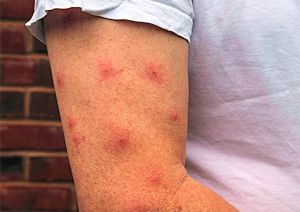 Right, so how do molecules work to repel insects?
Right, so how do molecules work to repel insects?We know a bit about how DEET works. It seems to taste bitter to insects like mosquitoes, so that puts them off, but that is not all. Mosquitoes detect DEET through their proboscis (feelers) and also through their feet (believe it or not), so its smell is also part of its effect. Another suggestions is that because mosquitoes are attracted to humans because their antennae have receptors that detect products of respiration, including carbon dioxide and lactic acid, then the sensing system of the insect can't penetrate a layer of DEET vapour above the skin. A more sophisticated description from experiments on Anopheles mosquitoes is that repellents alter the chemical profile of host scent signatures on the skin surface, so that the humans become ‘invisible’. Very recent research suggests that what soap you use may affect whether mosquitoes are attracted or repelled by you!
OK, so how about natural repellents?In historical terms, DEET is very recent. Writing back in the 5th-century BC, the historian Herodotus said that the Ancient Egyptians used insect repellents. The 1st-century ruler Cleopatra may have used primitive mosquito nets. For millennia, humans have damaged plants to release ‘essential oils’ from the cells, then hung them up at home to see off insect pests. Are ‘natural’ repellents better?Just because something is ‘natural’ is no guarantee that it is best, or even that it works. That just depends upon the molecules present. Citronella oil is one popular ‘natural’ choice. Although it repels some species of mosquito, it is rather volatile so needs to be applied at least once every hour. The aldehyde citronellal may be the active ingredient. |
 Artist's impression of Cleopatra sitting inside her mosquito net. |
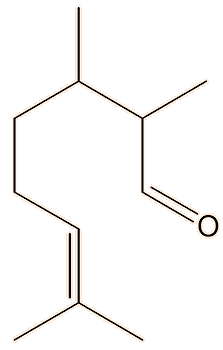 |
| Citronellal |
Well, it occurs naturally in lemon eucalyptus (Corymbia citriodora, formerly Eucalyptus citriodora), as a mixture of four isomers. For another thing, it can be made from citronellal, by addition of a water molecule, using a catalyst like dilute sulfuric acid. The aldehyde group becomes an –OH group; a C-C bond is formed, generating a ring, but two double-bonds disappear.
|
 A commercially available mosquito spray containing PMD as the active ingredient. |
The product is cis-PMD at low temperatures (-78°C); raise the temperature to +70°C, and another isomer, trans-PMD, is the product.
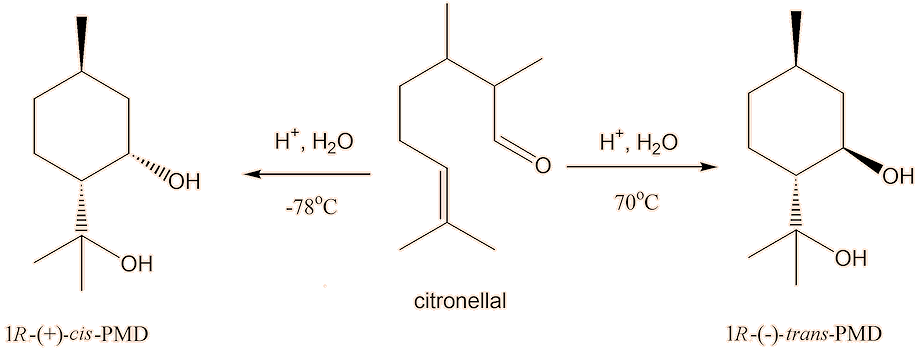
As we’ve said, there are four stereoisomers of PMD found in nature, which have been tested separately against Aedes albopictus mosquitoes; (1R)-(+)-cis-PMD is the most repellent and (1R)-(−)-trans-PMD is the least repellent of the four. But mixtures of all four repel mosquitoes too, as do racemates of the cis and trans isomers.
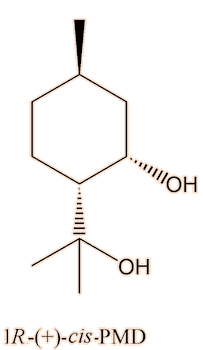 |
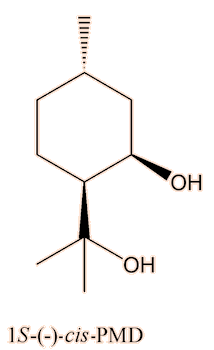 |
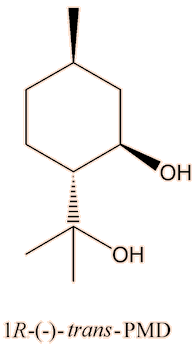 |
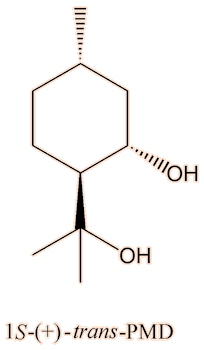 |

So people who use PMD are smart?Indeed, there’s no flies on them. Or mosquitoes! |
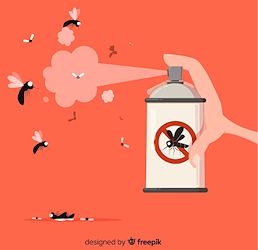 [Image: freepik.com] |
![]()
![]()
![]() Back to Molecule of the Month page. [DOI:10.6084/m9.figshare.22960463]
Back to Molecule of the Month page. [DOI:10.6084/m9.figshare.22960463]